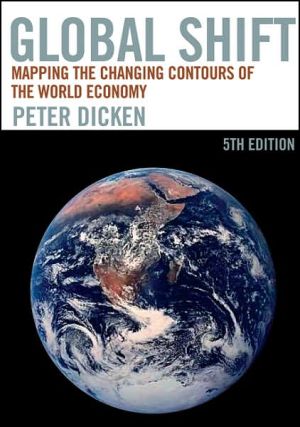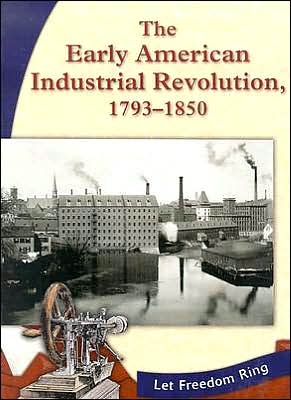Global Shift: Mapping the Changing Contours of the World Economy
Now in a substantially revised and updated fifth edition, this bestselling work is the definitive text on globalization. Peter Dicken provides a comprehensive, balanced yet critical account of globalization processes and their sweeping, highly uneven effects on people's lives. Each timely chapter has been extensively rewritten to reflect current globalization and antiglobalization debates, the latest empirical developments, and new ideas about the shaping and reshaping of production,...
Search in google:
This bestselling work is the definitive text on globalization. Peter Dicken provides a comprehensive, balanced yet critical account of globalization processes and their sweeping, highly uneven effects on people’s lives. Each chapter reflects current globalization and antiglobalization debates, the latest empirical developments, and new ideas about the shaping and reshaping of production, distribution, and consumption in the world economy. Of special utility are detailed case studies of key global industries and more than 250 specially designed figures and tables. To facilitate use in the classroom, the figures and tables are also available online as PowerPoint slides.
List of Abbreviations xviiPreface to the Fifth Edition xixThe Shifting Contours of the Global Economy 1Questioning 'Globalization' 3What in the world is going on? 3Conflicting perspectives on 'globalization' 5Unravelling the complexity of the new geo-economy: economies as networks 8Production circuits; production networks 13Even in a globalizing world, economic activities are geographically localized 21Networks of networks 23The geo-economy and the environment 25Conclusion 29Notes 30Global Shift: The Changing Global Economic Map 32What's new?: The imprint of past geographies 32Roller-coasters and interconnections 35The changing contours of the global economic map: global shifts in production, trade and direct investment 38Conclusion 67Notes 68Processes of Global Shift 71Technological Change: 'Gales of Creative Destruction' 73Technology and economic transformation 73Processes of technological change: an evolutionary perspective 74The time-spaceshrinking technologies 78Technological changes in products and processes 93Geographies of innovation 98Conclusion 103Notes 104Transnational Corporations: The Primary 'Movers and Shapers' of the Global Economy 106The significance of the transnational corporation 106Why firms transnationalize 107How firms transnationalize 114'Placing' firms: the myth of the 'global' corporation 124Conclusion 135Notes 135'Webs of Enterprise': The Geography of Transnational Production Networks 137The 'global-local' question: an oversimplified view of the TNC's dilemma 137Configuring the firm's production network: the complex internal geographies of the TNC 140TNCs within networks of externalized relationships 153Regionalizing transnational production networks 168Conclusion 171Notes 171'The State Is Dead...Long Live the State' 173'Contested territory': the state in a globalizing economy 173States as containers of distinctive cultures, practices and institutions 175States as regulators of trade, foreign investment and industry 179States as competitors 184States as collaborators: the proliferation of regional integration agreements 187Conclusion 204Notes 205'Doing It Their Way': Variations in State Economic Policies 207From the general to the specific 207A degree of convergence 207The older industrialized economies: the United States and Europe 210Japan 214Newly industrializing economies 216Conclusion 230Notes 230Dynamics of Conflict and Collaboration: The Uneasy Relationship between TNCs and States 232The ties that bind 232Bargaining processes between TNCs and states 236Conclusion 245Notes 246The Picture in Different Sectors 247'Fabric-ating Fashion': The Clothing Industries 249The clothing production circuit 249Global shifts in the clothing industries 250Changing patterns of consumption 254Production costs and technology 255The role of the state and the Multi-Fibre Arrangement 260Corporate strategies in the clothing industries 262Regionalizing production networks in the clothing industries 267Conclusion 276Notes 276'Wheels of Change': The Automobile Industry 278The automobile production circuit 278Global shifts in the automobile industry 280Changing patterns of consumption 283From mass production to lean production: technological change in the automobile industry 284The role of the state 286Corporate strategies in the automobile industry 289Regionalizing production networks in the automobile industry 304Conclusion 315Notes 315'Chips with Everything': The Semiconductor Industry 317The semiconductor production circuit 317Global shifts in the semiconductor industry 319Changing patterns of consumption 321Production costs and technology 323The role of the state 326Corporate strategies in the semiconductor industry 333Regionalizing production networks in the semiconductor industry: the case of East Asia 343Conclusion 345Notes 345'We Are What We Eat': The Agro-Food Industries 347Transformation of the food economy: the 'local' becomes 'global' 347Agro-food production circuits 349Global shifts in the agro-food industries 352Consumer choices - and consumer resistances 358Transforming technologies in agro-food production 360The role of the state 363Corporate strategies in the agro-food industries 367Conclusion 376Notes 376'Making the World Go Round': Financial Services 379Money counts 379The structure of the financial services industries 381The dynamics of the market for financial services 383Technological innovation and the financial services industries 384The role of the state: regulation and deregulation in financial services 387Corporate strategies in financial services 390Geographical structures of financial services activities 397Conclusion 407Notes 408'Making the Connections, Moving the Goods': The Logistics and Distribution Industries 410'Whatever happened to distribution in the globalization debate?' 410The structure of the logistics and distribution industries 411The dynamics of the market 414Technological innovation and the logistics and distribution industries 414The role of the state: regulation and deregulation in the logistics and distribution industries 420Corporate strategies in the logistics and distribution industries 423Logistics 'places': key geographical nodes on the global logistics map 430Conclusion 432Notes 432Winning and Losing in the Global Economy 435Winning and Losing: An Introduction 437From processes to impacts 437The contours of economic development 440Making a living in the global economy 449The 'double exposure' problem 450Conclusion 452Notes 452Good or Bad?: Evaluating the Impact of TNCs on Home and Host Economies 454A counterfactual dilemma 454TNCs and 'home' economies: potential impacts of outward investment 456TNCs and 'host' economies: potential impacts of inward investment 459Conclusion 473Notes 474Making a Living in Developed Countries: Where Will the Jobs Come From? 475Increasing affluence - but not everybody is a winner 475What is happening to jobs and to incomes? 476Why is it happening? 486What is being done? 492Conclusion 499Notes 499Making a Living in Developing Countries: Sustaining Growth, Enhancing Equity, Ensuring Survival 501Some winners - but mostly losers 501Heterogeneity of the developing world 502Sustaining growth and ensuring equity in newly industrializing economies 511Ensuring survival and reducing poverty in the least developed countries 518Conclusion 522Notes 522Making the World a Better Place 524'The best of all possible worlds'? 524Globalization and its 'discontents': emergence of a global civil society? 525Global governance structures 528Two key concerns: labour standards and environmental regulation 540To be 'globalized' or not to be 'globalized': that is the question 545What might the future be? What should the future be? 546Notes 553Bibliography 555Index 585About the Author 600







